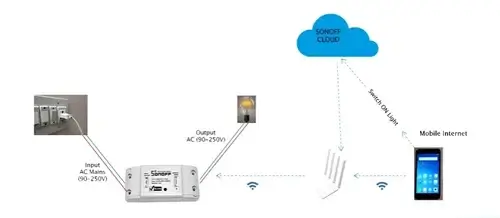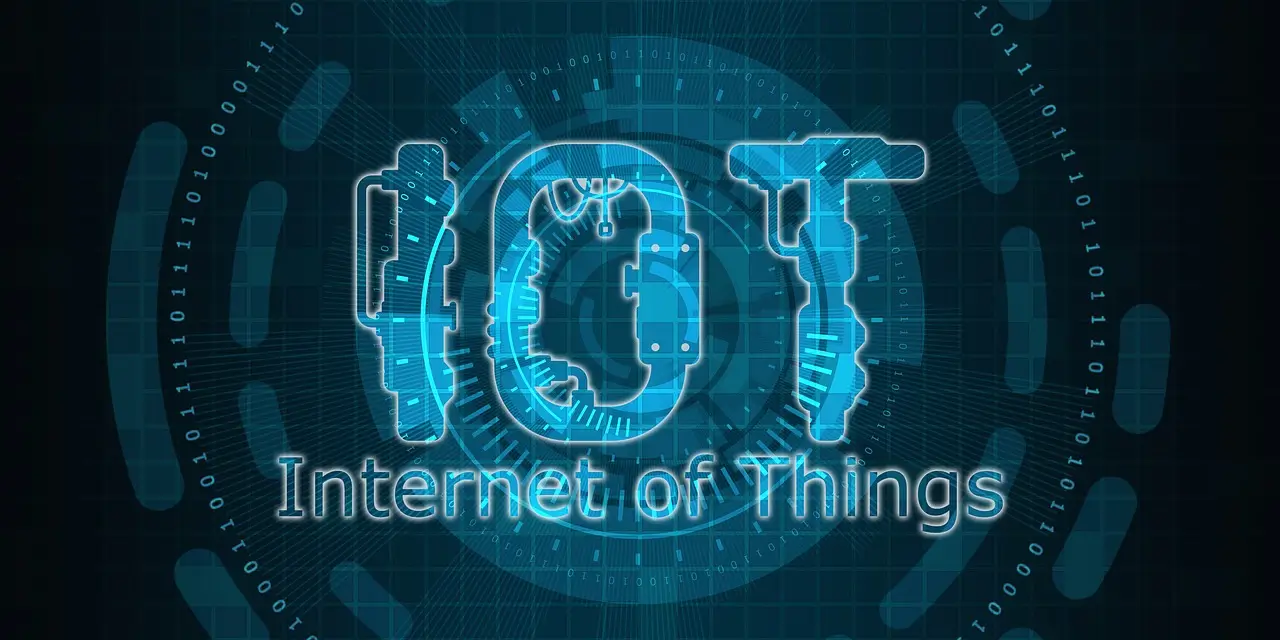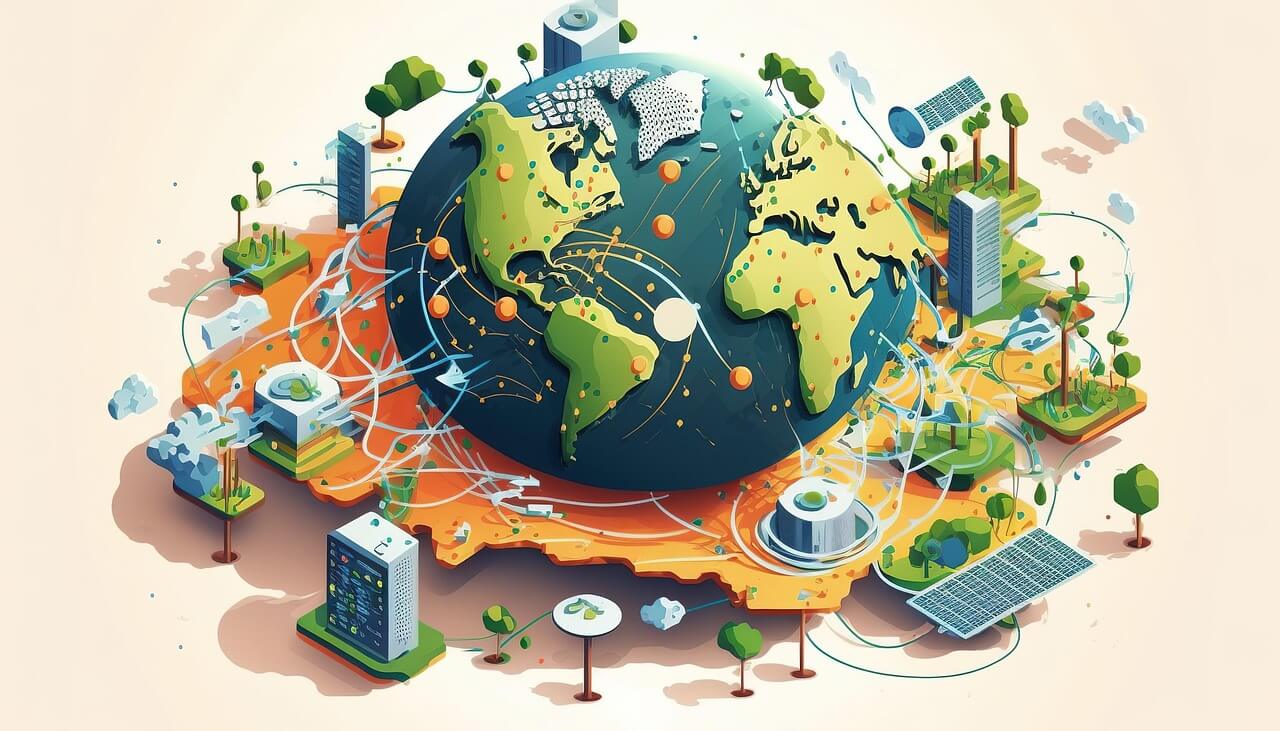The Internet of Things (IoT) is no longer just a futuristic concept; it is now a critical part of modern life, transforming industries, homes, healthcare, agriculture, and entire cities. By 2025, IoT is poised to reach over 30 billion connected devices globally, shaping how we live, work, and interact with technology.
If you are curious about IoT, how it works, its benefits, and why it matters for individuals, businesses, and governments, this comprehensive guide will help you understand the present and future of IoT.
What is IoT?
IoT, or the Internet of Things, refers to a network of interconnected physical devices embedded with sensors, software, and connectivity to collect, exchange, and act on data without human intervention. These devices can range from smart home appliances and wearable devices to industrial sensors and smart vehicles.
For example:
- A smart thermostat that adjusts the room temperature automatically based on your preferences.
- A wearable fitness tracker that monitors your heart rate and sleep patterns.
- Sensors in factories that monitor equipment health to prevent breakdowns.
- Smart irrigation systems that water crops based on soil moisture data.
IoT devices generate and analyze data to make decisions or provide insights that help automate processes, improve efficiency, and enhance user experiences.
How Does IoT Work?
The functioning of IoT relies on four key components:
- Sensors and Devices: These collect real-time data from the environment, such as temperature, motion, moisture, or location.
- Connectivity: The devices connect to a network (Wi-Fi, cellular, 5G, Bluetooth, LPWAN) to send and receive data.
- Data Processing: The collected data is analyzed using cloud computing or edge computing to extract actionable insights.
- Action and User Interface: Based on the analysis, the system may perform automated actions or provide information to the user for manual intervention.
For example, a smart home security camera detects motion, sends data to the cloud, analyzes whether it is a person or a pet, and sends a notification to your smartphone if it detects a potential intruder.
Key Benefits of IoT
IoT provides significant benefits to individuals, businesses, and society, including:
Automation and Efficiency
IoT automates routine tasks, reducing manual efforts and human errors while increasing operational efficiency. Smart homes automate lighting, heating, and security, while industries automate production monitoring and predictive maintenance.
Cost Reduction
By monitoring energy consumption, optimizing operations, and preventing equipment failures, IoT helps reduce operational costs for homes, industries, and commercial establishments.
Improved Safety and Security
IoT devices can detect hazards, such as gas leaks or equipment malfunctions, and alert users in real-time, reducing risks and ensuring safety.
Data-Driven Decision Making
IoT provides valuable insights through data collection and analysis, allowing businesses and governments to make informed decisions, optimize resources, and improve services.
Enhanced Quality of Life
IoT devices simplify daily activities, provide better healthcare monitoring, improve transportation systems, and contribute to a cleaner and more sustainable environment.
Applications of IoT in 2025
IoT has a wide range of applications across various sectors. Here are some of the most impactful areas where IoT is transforming lives and businesses:
Smart Homes
Smart home technology uses IoT to automate and control lighting, heating, security systems, and appliances using smartphones or voice assistants. For example:
- Smart lights that turn off when no one is in the room.
- Smart thermostats that adjust based on your schedule.
- Home security cameras accessible remotely.
These devices enhance convenience, save energy, and increase security in homes.
Healthcare and Remote Monitoring
Healthcare has embraced IoT with wearable devices that monitor vital signs, such as heart rate, blood pressure, and glucose levels. Hospitals use IoT devices for patient monitoring, medication management, and tracking medical equipment.
IoT in healthcare helps:
- Monitor patients remotely, reducing hospital visits.
- Alert healthcare providers in emergencies.
- Track elderly patients for safety.
Industrial IoT (IIoT)
Industrial IoT involves using IoT devices in manufacturing and industrial operations to monitor equipment, track assets, and ensure safety. IIoT enables predictive maintenance, reducing downtime and operational costs.
Examples include:
- Sensors monitoring machine vibrations to predict failures.
- Automated quality control systems on production lines.
- Energy monitoring to optimize usage in factories.
Smart Cities
IoT plays a critical role in building smart cities by enabling efficient management of resources and services. Smart city applications include:
- Smart traffic lights to reduce congestion.
- Waste management systems that optimize collection routes.
- Air quality monitoring systems.
- Smart street lighting to reduce energy consumption.
These initiatives improve the quality of urban life, reduce environmental impact, and enhance safety.
Agriculture and Precision Farming
IoT in agriculture uses soil moisture sensors, weather monitoring devices, and automated irrigation systems to improve crop yields and reduce water usage. Farmers can monitor livestock health and track equipment using IoT-enabled devices, leading to efficient farming practices.
Connected Vehicles
IoT in vehicles enables real-time monitoring of engine health, location tracking, and advanced driver-assistance systems (ADAS). Connected vehicles improve safety, provide predictive maintenance alerts, and enhance the driving experience.
Future of IoT: Trends to Watch in 2025
IoT is evolving rapidly, with new trends shaping its future:
5G-Powered IoT
The rollout of 5G networks is accelerating the adoption of IoT by providing high-speed, low-latency connectivity, enabling real-time data transfer and advanced applications like autonomous vehicles and remote surgeries.
Artificial Intelligence and IoT
Combining AI with IoT enables intelligent analysis of data collected from devices, allowing predictive analytics, advanced automation, and improved decision-making.
Edge Computing
Edge computing processes data closer to the devices, reducing latency and bandwidth usage while ensuring faster decision-making, which is critical for applications like autonomous vehicles and industrial automation.
Improved Security Protocols
With the increase in IoT devices, cybersecurity is a major focus. Future IoT devices will incorporate stronger encryption, secure firmware updates, and advanced authentication methods to protect against cyber threats.
Sustainable and Green IoT
IoT will contribute to sustainability through energy monitoring, waste reduction, and resource optimization across industries and households.
Challenges in IoT Implementation
While IoT offers immense potential, there are challenges to its widespread adoption:
- Data Privacy and Security: Protecting sensitive data collected by IoT devices from breaches and unauthorized access is crucial.
- Interoperability: Ensuring different devices from various manufacturers work seamlessly together.
- Data Management: Handling and analyzing large volumes of data generated by IoT devices.
- Power Management: IoT devices need efficient power management, especially in remote locations.
Addressing these challenges is essential to building a robust IoT ecosystem.
Why IoT is Important for Individuals and Businesses
For individuals, IoT simplifies daily activities, saves energy, and improves safety and health monitoring. For businesses, IoT enables predictive maintenance, asset tracking, and process optimization, leading to increased productivity and reduced operational costs.
Governments and city planners can use IoT to manage resources efficiently, reduce pollution, and enhance citizen services, contributing to sustainable development.
IoT in India: Growth and Opportunities
India is witnessing rapid IoT adoption across sectors. The government's initiatives like Digital India and Smart Cities Mission are driving IoT growth in urban infrastructure, transportation, and agriculture.
IoT in India is expected to reach significant milestones by 2025, driven by affordable sensors, expanding 5G networks, and increasing awareness of IoT benefits.
Steps to Get Started with IoT
If you want to implement IoT in your business or home, follow these steps:
- Identify Use Cases: Determine areas where IoT can improve efficiency or provide automation.
- Choose Devices and Sensors: Select reliable IoT devices suited for your application.
- Ensure Connectivity: Choose appropriate connectivity options like Wi-Fi, LoRa, or cellular based on range and data requirements.
- Data Management: Plan how you will collect, store, and analyze the data.
- Focus on Security: Implement security best practices to protect your IoT network.
- Monitor and Scale: Start small, monitor performance, and gradually scale your IoT ecosystem.
Final Thoughts
The Internet of Things in 2025 is transforming homes, industries, healthcare, agriculture, and cities by providing automation, efficiency, and actionable insights. Whether you are an individual looking to simplify your lifestyle or a business aiming to optimize operations, IoT offers practical solutions that deliver long-term value.
As IoT technology advances, it will continue to shape the future of how we live and work, making it essential for everyone to understand and embrace its potential.
Frequently Asked Questions About IoT
What is IoT?
IoT stands for the Internet of Things, which refers to a network of connected devices that collect and exchange data over the internet.
How does IoT benefit businesses?
IoT helps businesses automate processes, monitor equipment, reduce operational costs, and improve decision-making through data analytics.
Is IoT secure?
IoT devices can be vulnerable if not properly secured. It is important to use encryption, secure networks, and regular updates to ensure device security.
What are examples of IoT devices?
Examples include smart thermostats, wearable fitness trackers, industrial sensors, connected vehicles, and smart home security cameras.
How is IoT used in healthcare?
IoT is used in healthcare for remote patient monitoring, wearable health devices, and managing hospital equipment.
What is Industrial IoT (IIoT)?
IIoT refers to the use of IoT technology in industrial environments to monitor equipment, automate processes, and improve efficiency.




